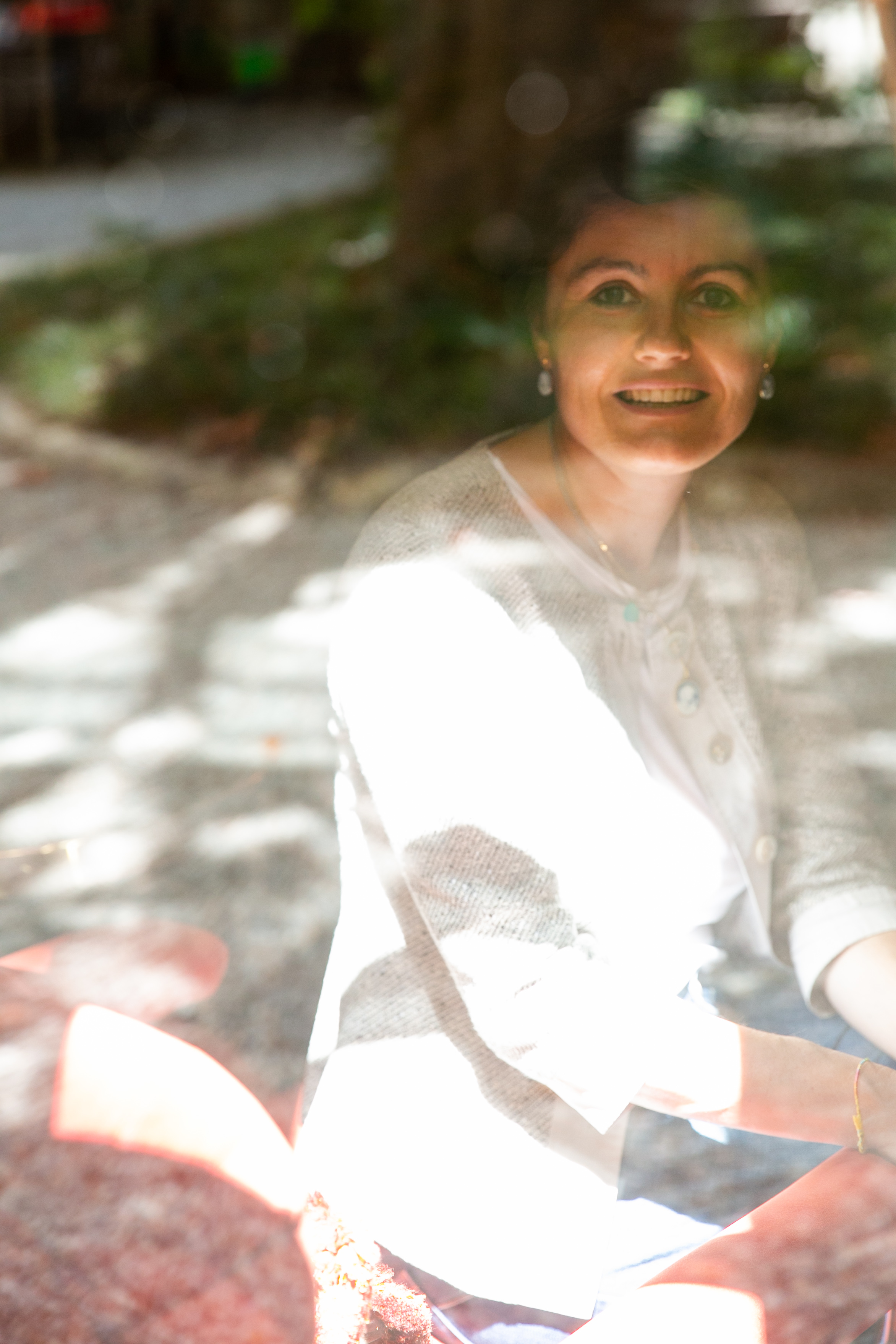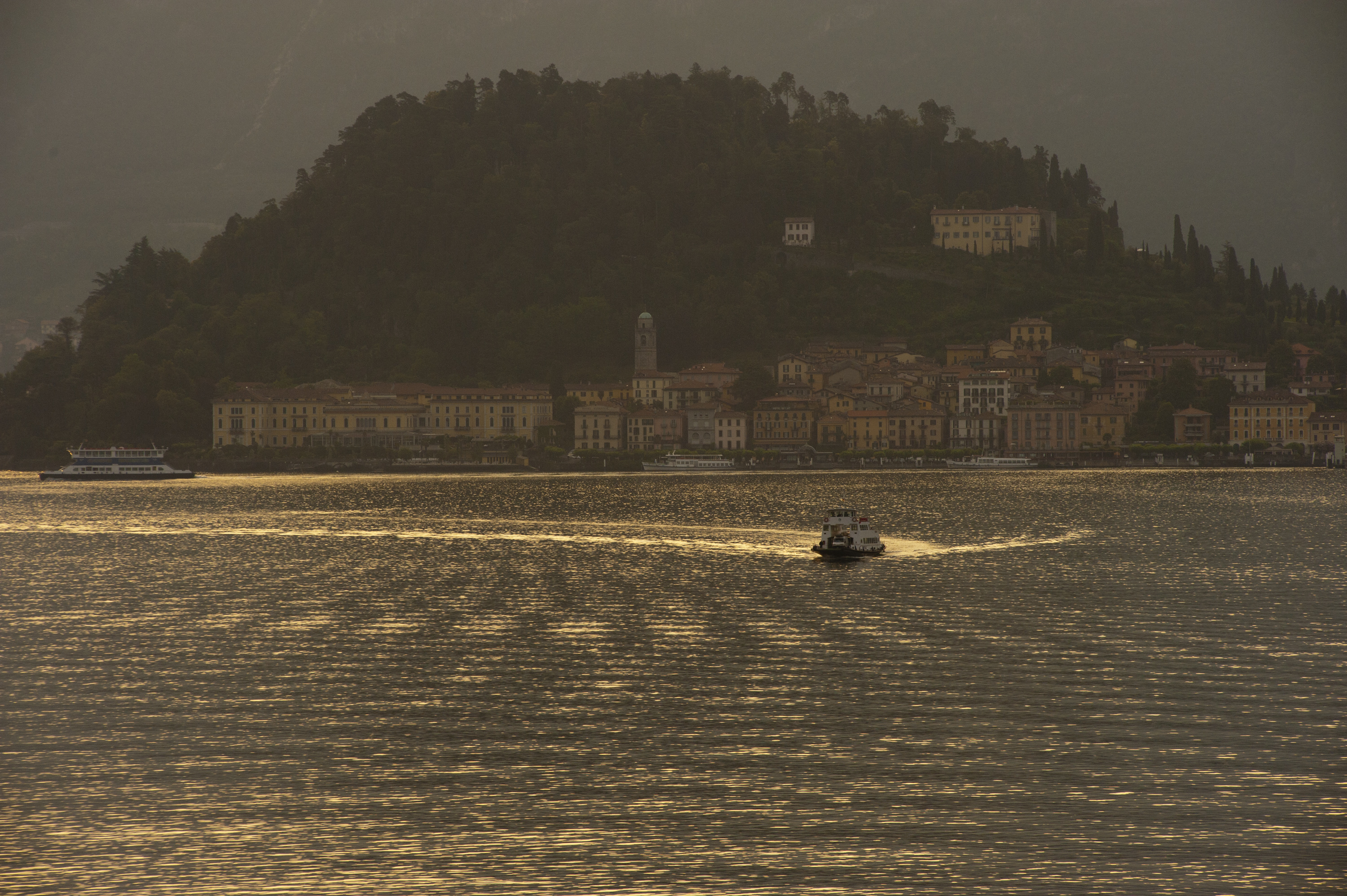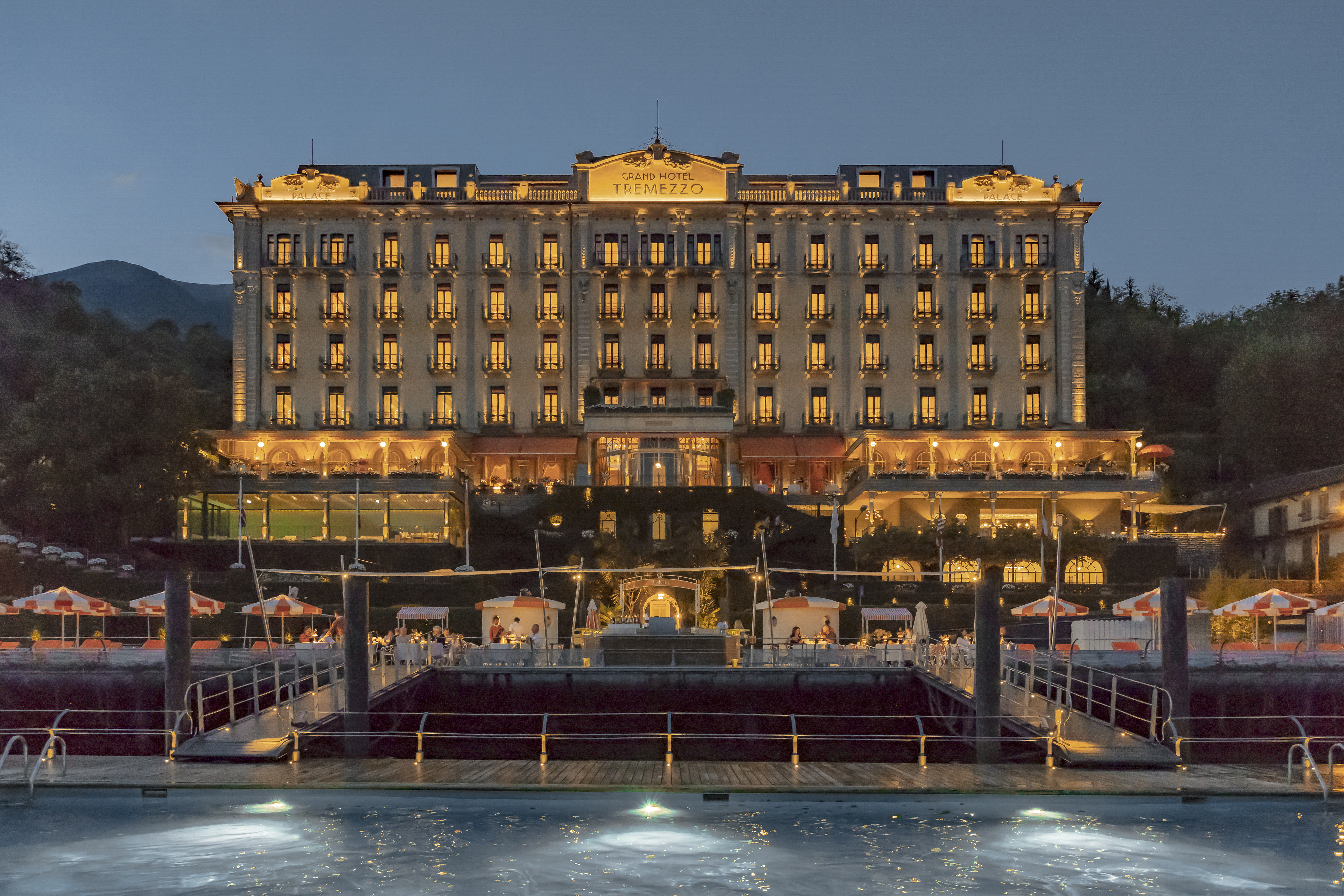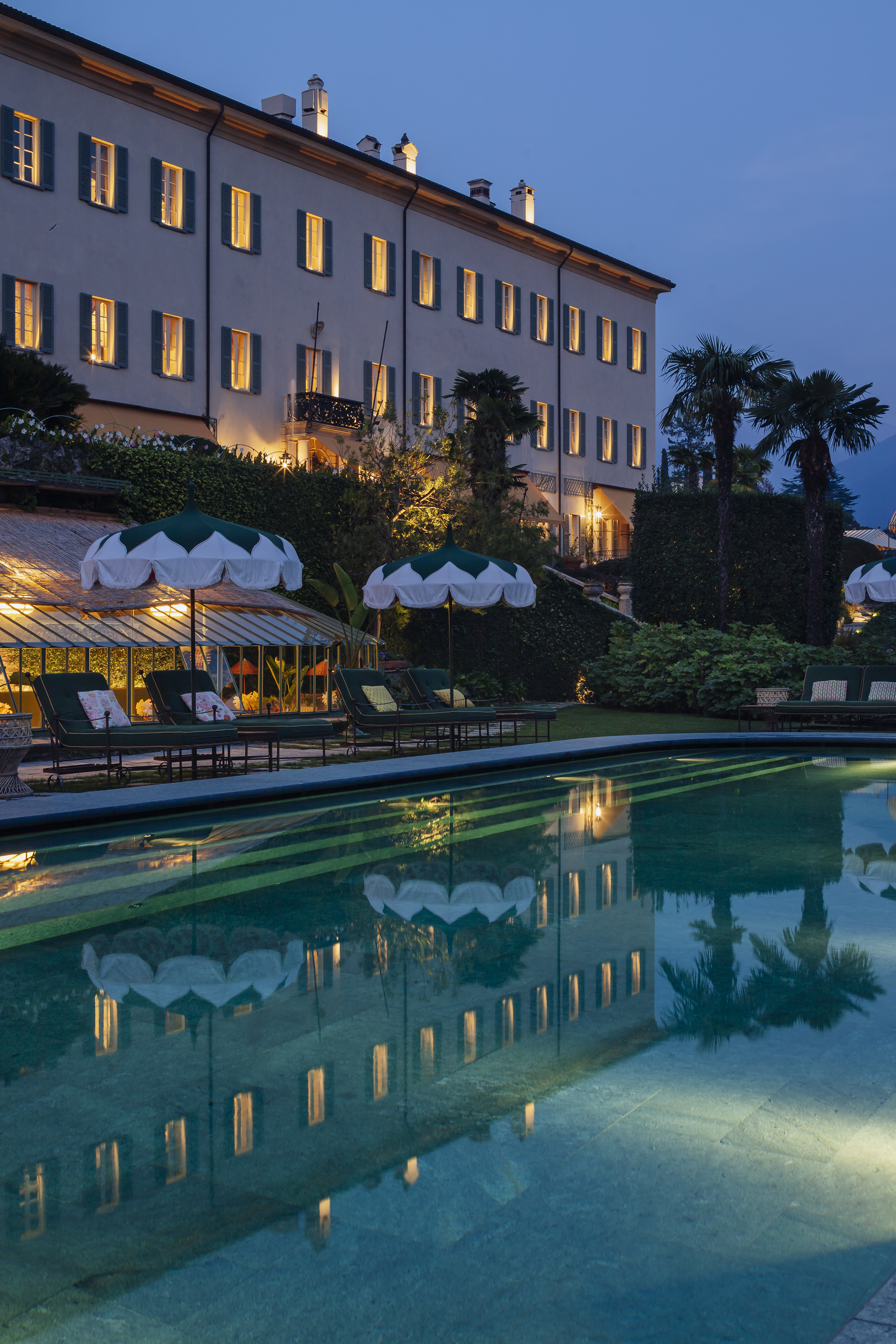Silvia Perego, lighting up the night

The façade of Grand Hotel Tremezzo has an extraordinary grandeur, and this is precisely why we imagined it bathed in quite a discrete light, lighting that harks back to the 19th century, very much like candlelight with all its charm.

If you were born between the water and the mountain, it is much easier. Light, pure light in your eyes, belongs to you, because you see it shimmer day in, day out until it sinks behind the peaks and the dark begins to speak. But the dark you know intimately as well. It has never scared you; you love its silence, its tender caress, which you eagerly await each evening. If your name is Silvia Perego, and you were born in Oriano Ticino on Lake Maggiore, and if you happen to also be one of our era’s most original lighting designers, then it is only natural that the De Santis family would see you as a kindred spirit, not just in a geographical sense, and engage you to design the lighting for Grand Hotel Tremezzo and Passalacqua. The outside illumination, that is, of two places that have become symbols of Italian hospitality, turning the façades into a nightly extension of their distinctive character, of the personality that animates them from within. It is a delicate undertaking. Almost a state of grace. A protective act accomplished through choices—both personal and professional—that challenge conventional wisdom.


What does it mean to be born overlooking the lake and what does it mean to choose, despite receiving important commissions across Italy, to remain in Oriano Ticino?
It means a great deal. In fact, I would say it was a poetic choice, because choosing to remain in a small village between the lake and the mountain—and living there in a house that my great-grandfather built—has taught me to see light in a different way, as more profound, more authentic. Natural light is an ancient light, at once fragile and all-powerful. It is the sunrise and the sunset; it is the way leaves are greener against the light; it is the way the sun splinters into pieces of gold on the water or hides in the shade of Monte Rosa. And this incredibly nuanced, visceral richness calls for restraint and discretion, a lesson that remains top of mind in every project I take on. The lighting I love never overwhelms a building, but rather enhances it, complements it with deep respect for the architecture and the inherent beauty of the night.
And your teachers?
First and foremost, my family who allowed me, despite their economic horizons, to live among beautiful lamps. The source of these lamps was my mother’s friend, who worked as an interior designer. Objects so beautiful that they make you actually feel better. This was a very important lesson for me—and something I think is quintessentially Italian—which inspired me to take a course in “medical design”. Unfortunately, the university of applied sciences where I studied, Politecnico di Milano, had taken that course off the roster, so it was perhaps only natural that I switched to lighting design. My teachers? Piero Castiglioni, Carlotta de Bevilacqua, the soul of Artemide, Marinella Patetta at METIS LIGHTING, and then—at the intersection of lighting and architecture—Renzo Piano with his Morgan Library and Alberto Campo Baeza with La Casa dell’Infinito in Cadiz.

Your favorite places?
They are the ones that inspired the name of my studio, In-Visible lab, and by that, I mean places that render the invisible visible. My studio, which is just steps from my house, is naturally chief among them. In an extraordinary Edward Hopper retrospective at the Palazzo Reale in Milan, I saw how the magic of light can transform everything. And then there was the “shocking” display that Ettore Sottsass created for Cartier jewelry or the René Magritte Museum in Brussels. If we include the theater as well, the performances of Robert Wilson are at the top of the list. And if I can add one more, I would say the LUMEN Museum of Mountain Photography in Plan de Corones in the Dolomites.
The light of nature and the light of culture. And then, one day, you are commissioned to reimagine the nocturnal look and feel of Grand Hotel Tremezzo.
The façade of Grand Hotel Tremezzo has an extraordinary grandeur, and this is precisely why we imagined it bathed in quite a discrete light, lighting that harks back to the 19th century, very much like candlelight with all its charm. So, we chose to work with fewer watts, only one watt per bulb, practically nothing. And we attempted to replicate that elegance in the back and even in the garden, where light focuses on the texture of the flowers, but once again discretely. Nighttime means silence, contemplation, intimacy… Any artificial light we add must protect these features.

But there are also obvious “sparks”, that glimmer almost like precious stones.
In collaboration with Valentina De Santis, we gave ourselves permission to break our own rules in two cases: first of all, in the entrance hall and in the elevator that leads from the street to the interior of Grand Hotel Tremezzo. We worked together to transform these two areas into a precious diamond, a jewel—thanks to the Rilegato lamps—of an entrance. And then we reinvented T Beach by illuminating the umbrellas, which look like nocturnal flowers out of a fairy tale. Somehow they also soften the obscure expanse of the lake, one of the features of Lake Como that so inspired the Romantics.
And then came Passalacqua, in the language of the 18th century.
We decided to illuminate the inside of the window arches on the façade, but in a way that suggests a warm, discrete light was actually emanating from the room itself. Once again, we opted for very low-power bulbs with an asymmetrical beam. We did around ten or twelve test-runs with the De Santis family until, in the end, we found a solution that satisfied everyone


How do you measure the success of a project?
If you miss it when it’s over. That was the case with Passalacqua and Tremezzo. You come back home, maybe you meet a neighbor on the way who offers you some vegetables they just harvested from the garden, and they make you a cup of tea while you gaze out over the lake. Later, you drop by the studio where the tables are still covered with the project, and you can’t bring yourself to start anything new. The last project sparked a light inside you, and you want to bask in it a little longer…



